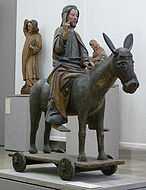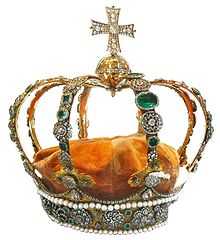Landesmuseum Württemberg
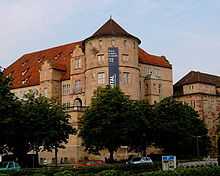
The Landesmuseum Württemberg (Württemberg State Museum) is the main historical museum of the Württemberg part of the German state of Baden-Württemberg. It emerged from the 16th-century “Kunstkammer” (art chamber) of the dukes, later kings, of Württemberg who resided in Stuttgart. As a museum it was founded in 1869 by King William I.
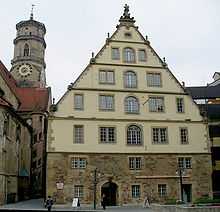
The museum's main location is the Old Castle in Stuttgart. The nearby granary and the cellar of the New Castle also contain parts of the collections as well as Waldenbuch Castle outside of Stuttgart. The collections are grouped into three divisions:
- archeology: Paleolithic, Neolithic, Bronze Age, Iron Age, antiquity, Romans in Württemberg, early Middle Ages, antique glass, and the Roman lapidarium (located in the New Castle)
- history of art and cultural history: modern era glass, Württemberg crown jewels, medieval art, art chamber of the Württemberg rulers, modern glass painting, musical instruments (located in the granary), clocks and scientific instruments
- folklore (located at the Museum of Everyday Culture in Waldenbuch Castle): labor, belief and piety, graphic design, clothing, merchandise, culture of living.
Apart from these collections the museum regularly features special exhibitions.
The museum presents a whole range of archeological treasures and a notable collection of medieval art. It also includes the inventories of the former army and manufacturing museums. Some of the most valuable possessions of the museum were already acquired by the dukes for their art chamber: two of only four preserved Aztec feather shields from before 1521 and the oldest preserved card game, about 1430, richly decorated and expensive already at the time of production. Exhibits of local origin include a celestial globe of 1493 by Johannes Stöffler, a 11-digit mechanical calculator of 1774 by Philipp Matthäus Hahn, first to build functional calculators to Gottfried Leibniz' design for all four arithmetic operations, and, less unique, but probably the museum's most symbolic exhibit: the royal Württemberg crown of 1797.
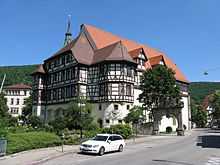
The museum today has a further seven branches throughout Württemberg referring to special topics:
- Schlossmuseum Aulendorf (Aulendorf Castle museum): old toys and art of the classicism period
- Schloss Urach (Urach Castle): sleighs of state, 25 specimens, world's biggest collection of this kind
- Museum für Kutschen, Chaisen, Karren (museum for carriages, chaises, carts), Hellenstein Castle, Heidenheim
- Deutsches Spielkartenmuseum (German Playing Card Museum), Leinfelden-Echterdingen: 15,000 card decks and 500,000 cards from seven centuries. The biggest public collection of playing cards in Europe
- Fashion museum, Ludwigsburg Palace
- Ceramics museum, Ludwigsburg Palace
- Dominican museum, Rottweil: archeological collection on arae flaviae (Rottweil), oldest town (AD 73)in Baden-Württemberg; medieval religious art collection; contemporary art collection of the Rottweil area
Several other former branches now belong to the separate Baden-Württemberg State Archeological Museum (Archäologisches Landesmuseum Baden-Württemberg), which has been founded in 1990 due to the ever increasing findings of archeological heritage in the state.
| Selected exhibits of Landesmuseum Württemberg | ||||||||||||
|---|---|---|---|---|---|---|---|---|---|---|---|---|
| ||||||||||||
External links
- Official web site
- Museum of Everyday Culture (German)
- Playing Card Museum (German)
Coordinates: 48°46′37″N 9°10′44″E / 48.777°N 9.179°E



